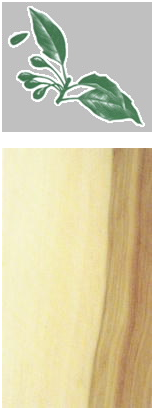CocoLumberTupelo
 Tupelo (American White Wood)
Tupelo (American White Wood)
Other Names:
Water Tupelo
Uses:
Tupelo is cut principally as lumber for shipping containers, furniture, Cigar or tobacco boxes, pallets, crates, baskets, and floors and platforms that are subject to heavy wear. . It is also used in railway ties and as pulp.
Availability: 4%of the total supply of all kinds in southern States.
Description:
Heartwood is light brownish-gray and merges gradually into the lighter colored sapwood, which is generally several inches wide.
Range:
Tupelo grows principally in the coastal regions of the Southeastern U.S. and along the lower Mississippi Valley. About two-thirds of the production of tupelo lumber is from the Southern states. Slightly more than half of this timber is in North Carolina, Georgia and Louisiana.
Physical Properties:
The wood has fine, uniform texture and interlocking grain. Tupelo wood is rated as moderately heavy (35lbs./cu.ft.), moderately hard and stiff, and moderately high in shock resistance. It has a long fiber for a hardwood, averaging 2.0 mm in length. Because of interlocked grain, tupelo lumber requires slow process in drying.
Specific Gravity: 0.48 (12% M.C.) Average Weight: 555 KG/CBM (12% M.C.) Modulus of Elasticity: 11308 MPa Hardness: 3780 N
Working Properties: Machining: 75% Nailing: 75% Screwing: 75% Gluing: 50% Finishing: 100%
Solution:
Sapwood is ideal substitute of Hard Maple, Soft Maple. Can be well furnished to Cherry finish so it’s widely used as substitute of Brazil White Wood and color-sorted American Yellow Poplar.
